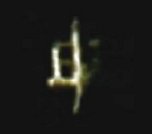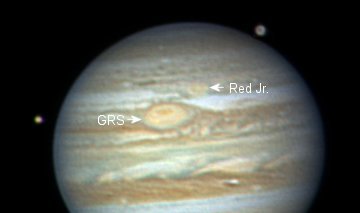 Planets. Comets. Auroras. Don't miss them! Sign up for Spaceweather PHONE.
Planets. Comets. Auroras. Don't miss them! Sign up for Spaceweather PHONE.
ASTEROID PHOTO-OP: Astrophotographers, mark your calendars. On July 3rd, asteroid 2004 XP14 will fly past Earth barely farther away than the Moon. The 600-meter space rock, glowing like a 12th magnitude star, will glide through the Milky Way in only 4 hours, passing many stars and nebulae along the way. Can you say "photo-op"? Stay tuned for details.
SPACE STATION SUMMER: The International Space Station (ISS) is doing something unusual: For the next few days it'll be orbiting Earth in almost-constant sunlight. This happens every year around the time of the summer solstice, and it results in many good sighting opportunities.
On June 13th, the ISS flew over the home of John Locker in Wirral , UK. The station was so bright, he was able to point his telescope at the moving target and record this video:

still frame |

full video |
"Nicely illuminated is Canadarm2 (the station's robotic arm), which is fully extended," says Locker. Also visible are "the ribbed sections of the P1 truss radiator."
Would you like to know when the ISS is about to fly over your backyard? Sign up for SpaceWeather PHONE.
RED vs. RED JR: What do you get when you put the two biggest storms in the solar system together? Know one knows. But we'll find out in July when the Great Red Spot bumps into its younger cousin Red Junior: full story.
"Red Jr. is really close to the Great Red Spot now," says Mike Salway of Australia who took this picture using a 10-inch telescope on June 12th:

Also shown are Jupiter's moons Io (left) and Ganymede (above right). See the markings on Ganymede? Those are real. Ganymede is the largest moon in the solar system, so big that even backyard telescopes can make out its murky details. If Ganymede orbited the Sun, it would be the 8th-largest planet, eclipsing both Mercury and Pluto.
See for yourself: Jupiter couldn't be easier to find. Step outside this evening at sunset and look south. Jupiter pops out of the twilight, brighter than any star, even before the sky fades to black: sky map.

